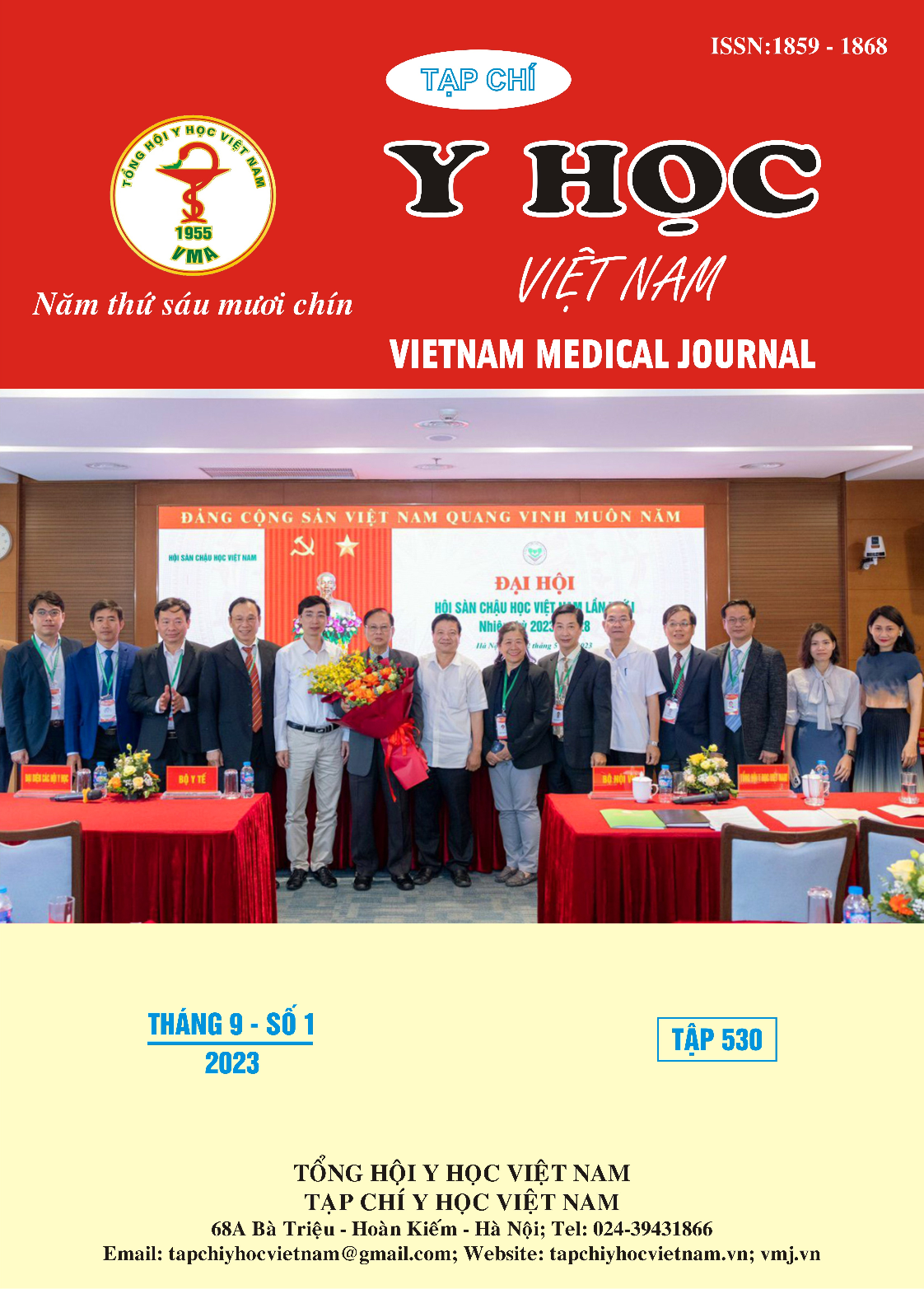THE CHARACTERISTICS OF WHITE BLOOD CELL INDICES AND IL-6 CONCENTRATION AFTER TREATMENT BY CAR-T CELLS COMBINED WITH PD-1-INHIBITOR MONOCLONAL ANTIBODIES ON EXPERIMENTAL MODEL
Main Article Content
Abstract
Objective: To evaluate the effects of CAR-T cells in combination with PD-1 monoclonal antibody on white blood cell indices and IL-6 concentration in experimental animals. Materials and methods: Experimental, descriptive cross-sectional study on 60 Swiss mice. Study subjects were divided into 4 groups: Group 1: IP Injection of 0.1 ml of PBS + IV Injection of 0.1 ml of PBS/mouse. Group 2: IP Injection of 106 CAR-T cells/0.1ml + IV Injection of 0.1ml of PBS/mouse. Group 3 (PD-1): IP Injection 0.1 ml of PBS + IV Injection Kháng thể đơn dòng ức chế PD-1 (250μg)/0.1ml/mouse. Group 4 (CAR-T + PD-1): IP Injection 106 CAR-T cells/0.1ml + IV Injection Kháng thể đơn dòng ức chế PD-1 (250μg)/0.1ml/mouse. After injection, the mouse's overall status was monitored, Leukocyte indices in the complete blood count were analyzed (Sysmex XN1000, Japan), and serum IL-6 concentration was measured using ELISA method. Results: The white blood cell indices in all 3 groups CAR-T, PD-1, and CAR-T combined with PD-1, were comparable with the control group (p>0.05). Serum IL-6 concentration was not different betweeen CAR-T and control group. Serum IL-6 concentration was significant lower in CAR-T group combined with Kháng thể đơn dòng ức chế PD-1 compared with control group. Conclusion: Our data pointed out that CAR-T cell therapy alone or in combination with PD-1 antibody neither affected white blood cell indices nor induced IL-6 release in experimental animals
Article Details
Keywords
CAR-T, PD-1, white blood cell indices, IL-6
References
2. Davis A. S., Viera A. J., Mead M. D. (2014). Leukemia: an overview for primary care. Am Fam Physician, 89(9): 731-8.
3. Novartis Navigate, Portfolio Global Product, Data Financial (2017). Novartis Receives First Ever FDA Approval for a CAR-T Cell Therapy, Kymriah (TM)(CTL019), for Children and Young Adults with B-cell ALL That Is Eefractory or Has Relapsed At least Twice.
4. Song W., Zhang M. (2020). Use of CAR-T cell therapy, PD-1 blockade, and their combination for the treatment of hematological malignancies. Clin Immunol, 214: 108382.
5. Brudno J. N., Kochenderfer J. N. (2019). Recent advances in CAR T-cell toxicity: Mechanisms, manifestations and management. Blood Rev, 34: 45-55.
6. Chou C. K., Turtle C. J. (2020). Assessment and management of cytokine release syndrome and neurotoxicity following CD19 CAR-T cell therapy. Expert Opin Biol Ther, 20(6): 653-664.
7. Kaur S., Bansal Y., Kumar R., et al. (2020). A panoramic review of IL-6: Structure, pathophysiological roles and inhibitors. Bioorg Med Chem, 28(5): 115327.
8. Yakoub-Agha I., Moreau A. S., Ahmad I., et al. (2019). [Management of cytokine release syndrome in adult and pediatric patients undergoing CAR-T cell therapy for hematological malignancies: Recommendation of the French Society of Bone Marrow and cellular Therapy (SFGM-TC)]. Bull Cancer, 106(1s): S102-s109.


